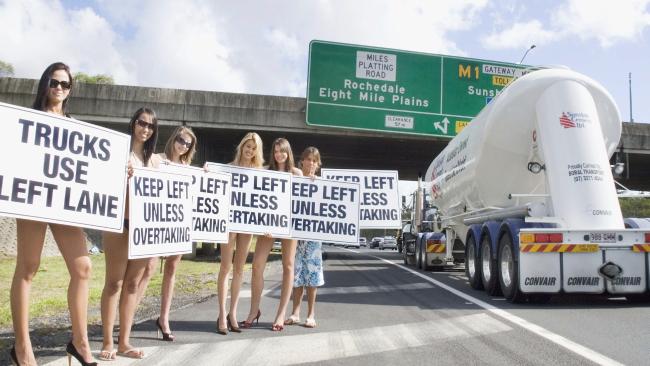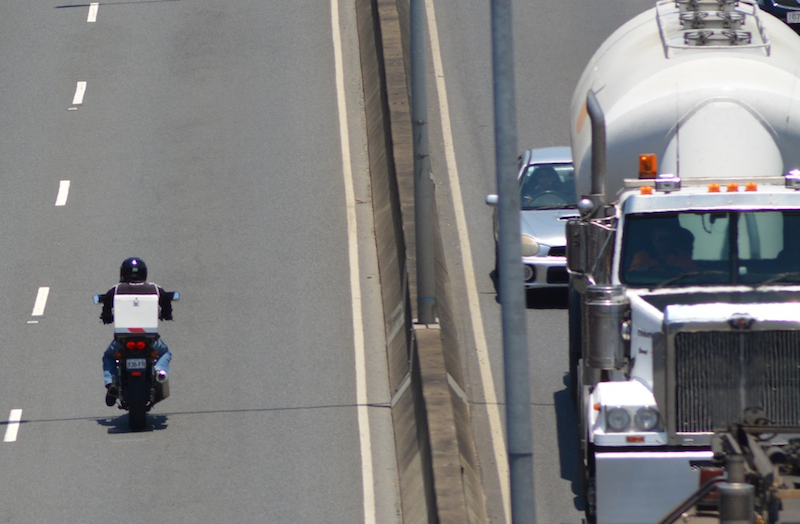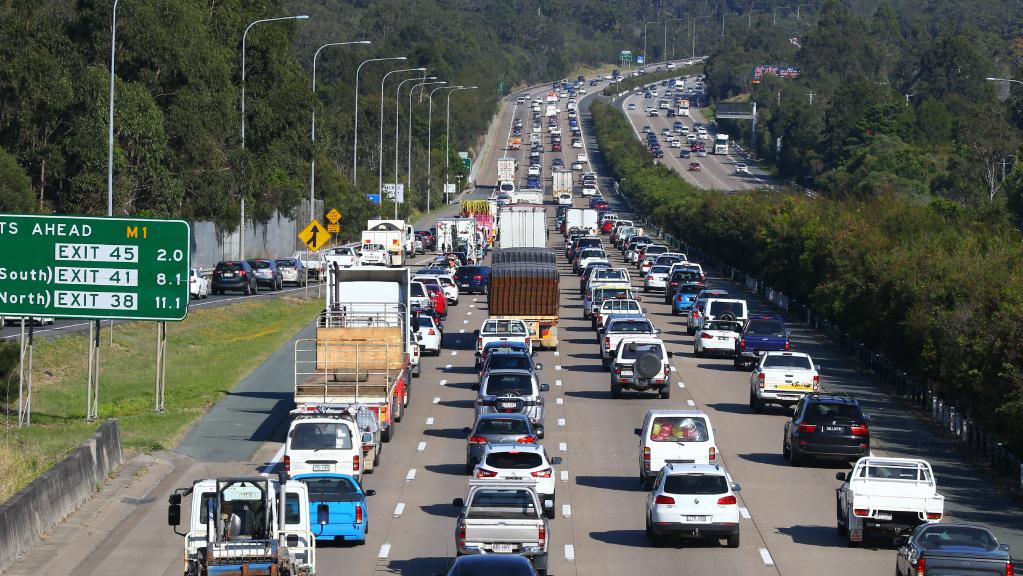Trucks will be restricted to the two left lanes of the Pacific Motorway between Brisbane and the Gold Coast from tomorrow (August 1, 2017) but it should extend to other highways around our nation.
The move in Queensland has been initiated to prevent gridlock during the Commonwealth Games, after which it will be “evaluated”.
In recommending the change, the Queensland Government says they looked at interstate and international experience with truck lane restrictions.
Meanwhile, a trial of slower truck speeds on the Monash Freeway in Melbourne is planned to also included lane restrictions later this year.
It’s not rocket science. The system has worked in many countries for decades.
It’s particularly safer for vulnerable motorcyclists as it gives us a bigger buffer from the juggernauts with all their blind spots for bikes!
Unfair laws?
Truckies are not happy and say the new laws are unfair and could cause fatal crashes with merging traffic.
However, trucks do not have to stay in the far left lane. They are only restricted to the two left lanes so they can sit in the second lane and merging traffic will not be a problem.
Restrictions allow trucks to overtake, but they have to stay in the two left lanes, even if traffic is stopped or slowed. They can only travel in the right lane to avoid an obstruction.
The fine for the driver is $126 and three demerit points, or $630 for their businesses.
Extend to other roads?
There are many other three- and four-lane highways around the nation where similar truck lane restrictions should apply.
Last year, the Victorian Government started a trial of a 90km/h speed limit for trucks on a section of the Melbourne Monash Freeway.
However, as the below official animation video shows, there is no benefit in traffic flow. It even shows cars and motorcycles undertaking and making dangerous manoeuvres around trucks spread across the four-lane freeway.
A Victorian Transport Workers Union spokesman says the trial failed because it resulted in other vehicles performing dangerous manoeuvres around trucks.
A spokesman for Minister for Roads and Road Safety Luke Donnellan confirms the speed reduction “did not support the benefits of a truck and car differential speed limit below 100km/h”.
“The second phase of the Monash Speed Trial, where trucks will be banned from travelling in the far right lane, will commence when road works are completed later this year,” he says.
Extend to more vehicles?
Road safety and traffic could also be improved if other slow-moving vehicles were also limited to the left lane (right or slow lane in countries where they drive on the right side of the road).
Trucks, caravans, buses and towed vehicles are restricted to the “slow” lane in European autobahns and only allowed to pass in designated areas.
These passing areas are never on hills as it takes trucks longer to pass each other going up or down a hill.
How many times have you been stuck behind two trucks blocking both lanes?
This simple system of lane restriction would separate trucks from smaller traffic, particularly vulnerable motorcycles and would allow the rest of the traffic to move more smoothly without being hindered by trucks.
Truck dangers
Trucks are responsible for the deaths of more than 300 people a year in Australia and 4500 a year in the US.
The International Journal of Injury Control and Safety Promotion shows trucks account for 8% of US highway traffic, yet are involved in 11% of fatal road crashes.
Professor Bill Russell, deputy director of Melbourne University’s Australasian Centre for the Governance and Management of Urban Transport, has said Australians would be safer if more freight was moved by rail.
His research showed that moving 10% more freight by rail would save 25 lives in Australia every year, and 100 serious injuries such as quadriplegia or brain damage. Yet, road freight is increasing while rail is decreasing.





